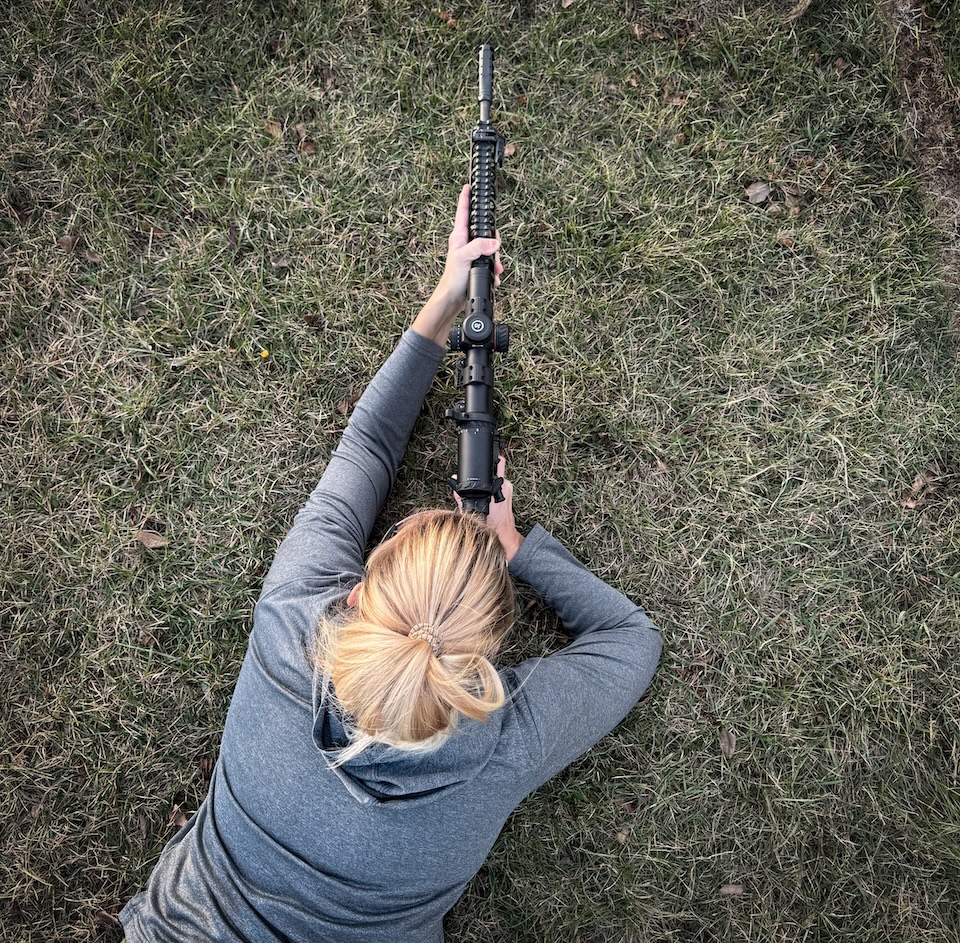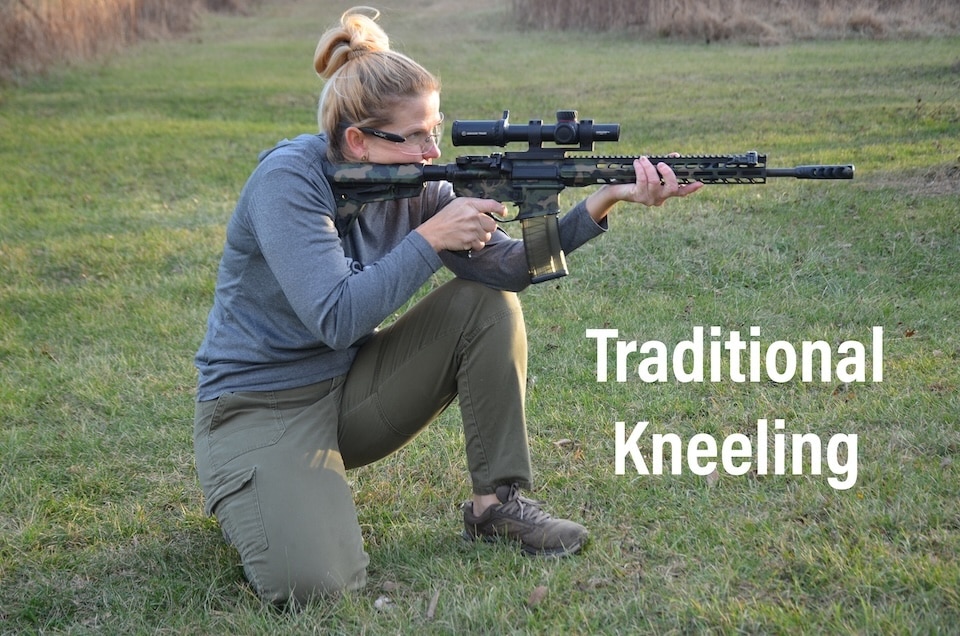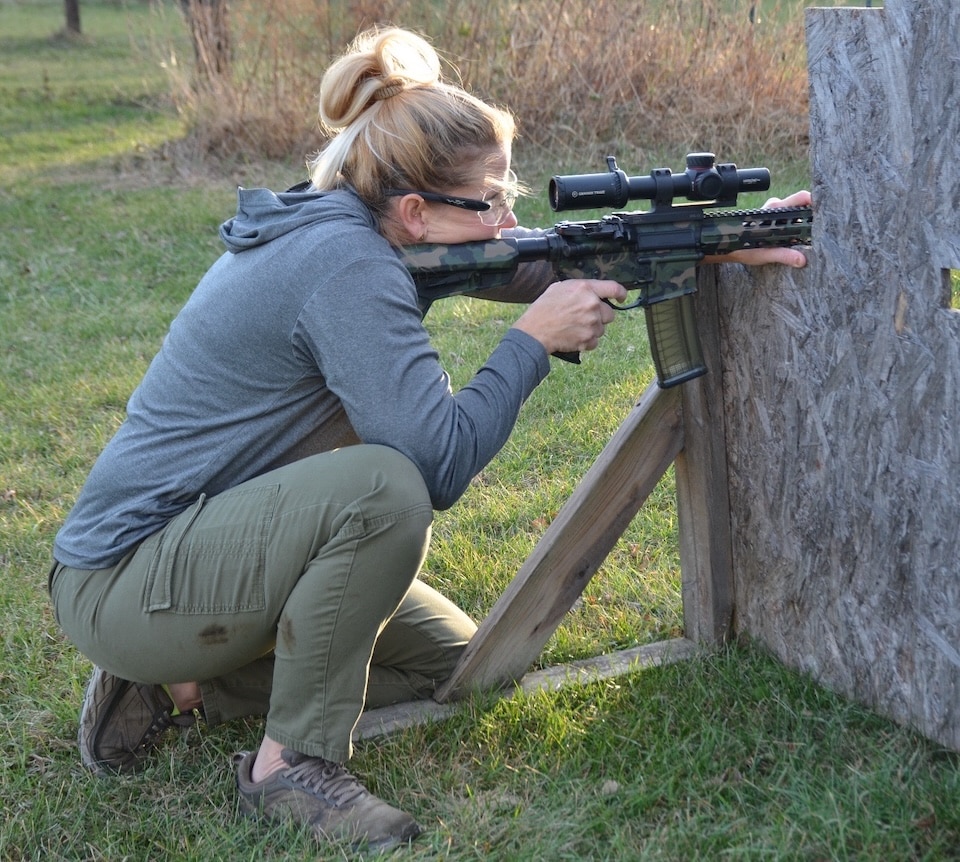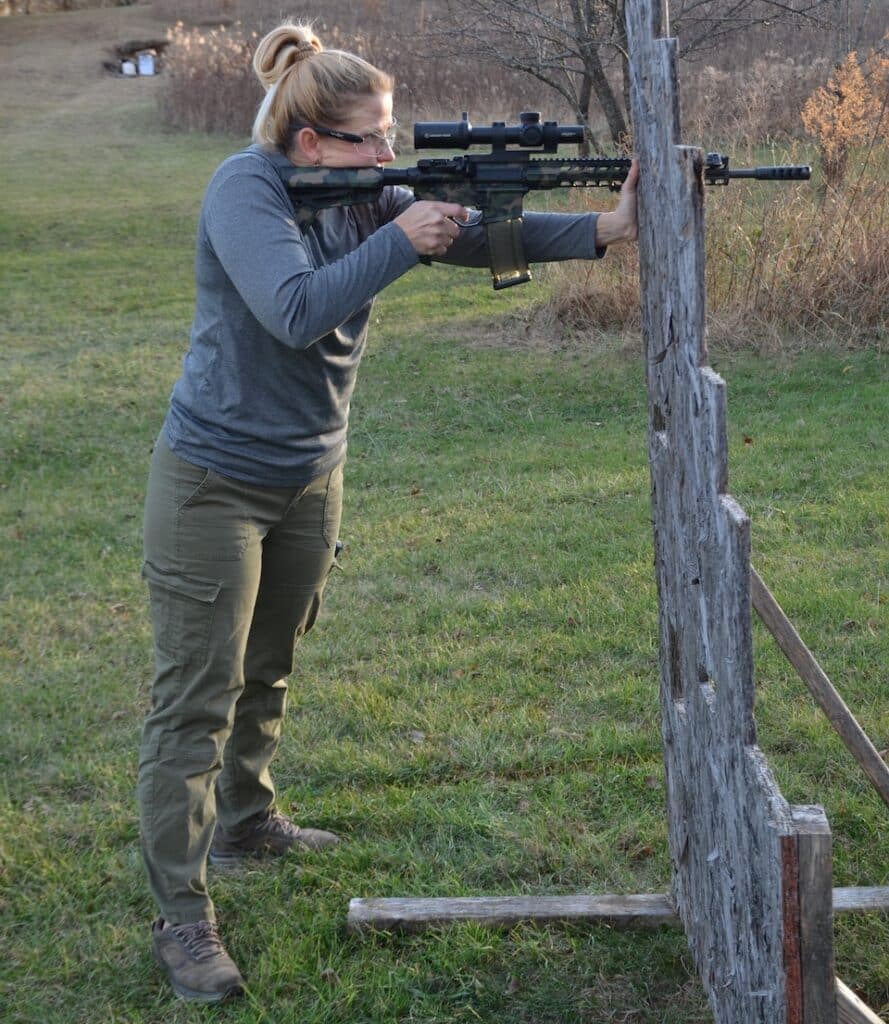One tool that every American should have experience with is a rifle. We have the freedom to use whatever tools we want for personal safety, and a rifle is a great option. We also can use a rifle to procure food, and should know how to most effectively shoot it to harvest game ethically. Let’s look at three basic, real-life positions with a rifle that anyone can master.
IRL with your Rifle
Old school gun folks might say that a new gun owner should learn to shoot prone first, or an “elevated prone” off a table (like bench rest shooting), and then probably standing and kneeling. Realistically, let’s consider how we would use a rifle or carbine IRL (In Real Life)
For someone who’s never shot a rifle, starting off prone is a great plan. It’s just not always possible – for example, your public range rules confine you to the lane you are in and there’s not a suitable surface or it’s flat-out forbidden. You might just have to shoot standing or propped up on the support in front of you.
Starting out with a .22 rifle is also a best-case scenario because it’s lighter, you can learn the basics of positions without loud noise and weight … but it’s not always possible.
In real life, you also should do your best to adjust the rifle to you. Ask yourself if you can shorten the stock or adjust the length of pull? If you’re learning at a range with rentals, take time to find a gun that fits you so your experience is as pleasant and productive as possible.
Prone
One of the most stable positions you can shoot from is prone. In competition, we will take a prone position, even if we have to spend time getting up and down because we are able to shoot faster and make faster follow-up shots to get our hits. Anything small and far that you MUST hit with a first round impact is worth taking a prone position for, if you can do it fast.

The simplest prone position is resting your magazine on the “deck” or whatever surface you’re on (the ground, the range floor, etc.), your body lined up directly behind the gun and both elbows on the ground. Your dominant side shoulder should be behind the buttstock, torso behind your strong side shoulder as much as possible, legs behind your body; as much of your body mass should be directly behind the gun to absorb the recoil and control the gun. This also puts your head alongside the stock, and means that you will be able to look straight through the scope.
Avoid being sideways behind the gun, having only your shoulder behind it to absorb recoil (ouch) and your head coming into the stock at an angle and tilting. Your eye looking straight through the center of your optic will help you avoid parallax – when you’re not centered in the optic and you see shadows on the sides. This is the optic sight version of not having your sights aligned.
Prone allows you to be very stable; there’s no height to the position and your center of gravity is literally on the ground. You will have three points of contact: the mag you’re resting on, both elbows and your body – lying flat. This will eliminate movement as you aim and allow the most control possible.
Kneeling and Reverse Kneeling
In the traditional kneeling position, you rest your weak side elbow on your weak side knee and your dominant side elbow is hanging free as you manipulate the trigger and action. This is not the best kneeling position you can take, since it’s not very stable.

Reverse kneeling is a better position. What is reversed are your knees. Instead of your support elbow on your support-side knee, you put your support-side knee to the ground and your dominant-side knee is up. This allows you to place your dominant-side elbow on your knee and establish another point of contact.

Kneeling puts your center of gravity low to the ground and often you’re sitting on your foot. Your foot can be “up” and on your toes, or collapsed and turned sideways, resting more on your ankle and the outside edge of your foot.
We generally use this position when there is an object to kneel behind and rest our rifle on, such as the hood of a car or a barricade wall. You’re resting on an object instead of your knee, and using the knee that is up for support; this means more points of contact to stabilize the rifle. If you can grip the object you’re resting off with a “C-clamp” grip, and if you can “trap” the handguard into a corner, even better. Being able to grip and clamp on, or push against, an object makes it possible to then lean your weight into the buttstock of the rifle and “load” the object you’re resting against.
Loading is more important when we get to the next position, standing supported.
Standing Supported
Sometimes we are not able to shoot from pone or kneeling, sometimes we need to stand to see and shoot the target.

Standing supported implies that we use support. It can be a wall, a tree, a car. Whatever it is, there are a few things to keep in mind.
Try to C-clamp the wall, this can be done by creating a C-shape with your hand and resting the handguard in it, while the other fingers either grasp around the wall or push against it from behind. Position your body directly behind the gun, behind the support. Don’t contort or bend over, standing erect usually helps avoid a tilted head parallax and balance issues.
If you use this position off a tree, it’s usually to steady yourself and unless the tree has very aggressive bark that you can grab or is very small diameter, you generally will be loading less weight into it. When I shoot standing against a strong barricade or wall, I load all my weight into it to help manage recoil and make faster follow-up shots.
Standing supported allows you to have another point of contact to support and steady yourself. Sometimes, there is a way to put your leg up so you can get support under your strong side elbow, even though you’re standing. (This is often something we do in competition from vehicle door frames.)
Experimenting with supported standing, kneeling, and prone off and around props the next time you are on the range. You can even test these positions out with an empty rifle and dry fire with an empty magazine inserted, so you understand where the working dimensions of the rifle come into play. Note: Make sure your rifle and mag are empty and do not have any ammo in your dry fire area.
Rifles are great tools and spending a little time working through positions with them, even if it’s just dry fire time, can teach you how to use this tool better.
Find the perfect rifle for your recreational, competition or hunting needs at Stag Arms.
Becky Yackley primarily competes in 3 Gun, USPSA, Bianchi pistol, but has competed in shooting since 1989 in disciplines from service-rifle, to NCAA Air Rifle and Smallbore, air pistol and a little bit of long range rifle. She shoots guns and cameras at competitions around the country, and writes in her fictional spare time. View all posts by Becky Yackley